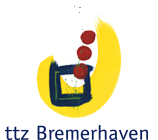
Correlation of sensory and analytical data
Funding:
AIF-ZIM-KF
Project Duration:
01.11.2009-31.10.2011
Project Manager:
Werner Mlodzianowski
Homepage:
–
The objective of KosaDat is to be able to predict reliably the sensory features of foodstuffs, using different types of dark chocolate as an example. This may be possible through the application of statistical evaluation algorithms and automatic learning processes on the basis of chemical analysis data. In order however to be able to correlate unknown chemical profiles with specific aromas, first of all the taste and smell attributes of dark chocolate of various quality grades are quantified with the aid of analytical sensory methods. In addition, a selection of products is subjected to hedonistic consumer tests, which make it possible to determine underlying sensory acceptance in order to be able to draw conclusions about their market potential. In this way, “chemical fingerprints” and sensory profiles are created for selected products in the course of the project. The data generated are then analysed using data-mining methods in order to make predictions possible regarding smell, taste, quality grade and consumer acceptance, solely on the basis of the chemical profiles.
The quality perception of the consumer depends on a variety of different factors. With the help of sensory testing methods, sensory quality perception and enjoyment can be measured. While the consumer can say whether he likes a product or not, trained testers can make differentiated statements regarding the appearance, smell, and taste of a foodstuff, as well as the mouthfeel it triggers. The human being is used as a measuring instrument for this type of analysis. By contrast to weighing scales or a gas chromatograph, the human being is however less selective – individual perceptions cannot be discerned in isolation from each other, even with a lot of training. In addition, the human being is influenced to a considerable degree by endogenous and exogenous factors which can distort his sensory judgement.
The sensory experience when consuming a foodstuff is relayed in the human being via the senses and is the crucial factor in the quality perception when consuming a product. Chocolate is a foodstuff which contains cocoa and for most people an epitome for pleasure due its wide variety of shapes and tastes. A distinction is made between a large number of types, qualities, shapes and tastes of chocolate. Various factors however influence the quality and thus also the taste of different sorts of chocolate. The consumer’s quality perception thus depends on the many different ingredients contained in the cocoa as raw material and the compounds which are produced during the manufacturing process. With the aid of different sensory testing methods, sensory quality perception and pleasure can be measured.
While the consumer can say whether he likes a product or not, trained testers can make differentiated statements regarding the appearance, smell, and taste of a foodstuff, as well as the mouthfeel it triggers. The human being is used as a measuring instrument for this type of analysis. By contrast to weighing scales or a gas chromatograph, the human being is however less selective – individual perceptions cannot be discerned in isolation from each other, even with a lot of training.
In addition, the human being is influenced to a considerable degree by endogenous and exogenous factors which can distort his sensory judgement. Systematic errors also occur, which are for the most part unexplained. Despite these unfavourable preconditions, the sensory perception of test candidates is still the only way to arrive at statements about the sensations which are evoked by chemical compounds, such as aromas.
That is why there is a heightened demand, above all in the framework of quality control, for instrumental measuring methods which can produce a quality and acceptance assessment profile under consideration of human sensory data which is precise and can be quickly interpreted. Data sets which have been determined objectively and comprise a reliable combination of sensory and chemical/physical data have the potential to make a major contribution to product optimisation in all stages of production and development which address human perception, coupled with cost reduction and saving of resources.
Further information on the KosaDat project:



